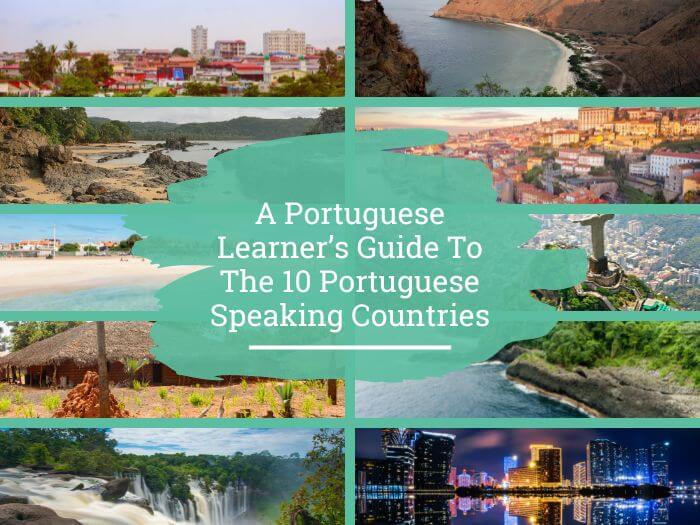If you're learning Portuguese, did you know that there are ten Portuguese speaking countries in four continents?
If you thought Portuguese was only spoken in Portugal and Brazil, you should get up to date right away. As you read this, you might be asking: where else do people speak Portuguese?
There are 8 more countries where Portuguese is the official language, which makes it present in 4 continents. Let’s take a look at ten Portuguese speaking countries, their characteristics and what makes them so interesting for Portuguese learners.
Pro Tip
By the way, if you want to learn Portuguese fast and have fun while doing it, I recommend Portuguese Uncovered which teaches you through StoryLearning®.
If you’re ready to dive in, click here for a 7-day FREE trial.
Table of Contents
The 10 Portuguese Speaking Countries
In the table below, you'll see a quick overview of those ten Portuguese speaking countries:
| Country | Continent | Population |
| Angola | Africa | 29,310,273 |
| Brazil | South America | 215,261,219 |
| Cabo Verde | Africa | 570,633 |
| Equatorial Guinea | Africa | 1,679,172 |
| Guinea-Bissau | Africa | 2,026,778 |
| Macau | Asia | 682,300 |
| Mozambique | Africa | 27,909,798 |
| Portugal | Europe | 10,374,822 |
| Sao Tome e Principe | Africa | 178,739 |
| Timor-Leste | Asia | 1,340,513 |
Beside these countries, you can find opportunities to speak Portuguese in other nations too, though not as an official language, such as China, India, Malaysia, Indonesia, Caribbean, Spain, France, Germany, South Africa, Japan, Switzerland, the United States, Canada, Australia and South America.
Although Brazil and Portugal are not the only two Portuguese speaking countries in the world, they are still the two most prominent.
That's not only because they still have bigger populations, but also for their relevance as global players and destinations chosen by tourists and immigrants from all over the world.
The number of foreign residents in Portugal has increased, amounting to more than half a million immigrants. And there are more than 1 million foreigners living in Brazil, which is known as a multicultural society and a very welcoming nation.
So now let’s learn a little bit more about Brazil.
Brazil, A Continental Country
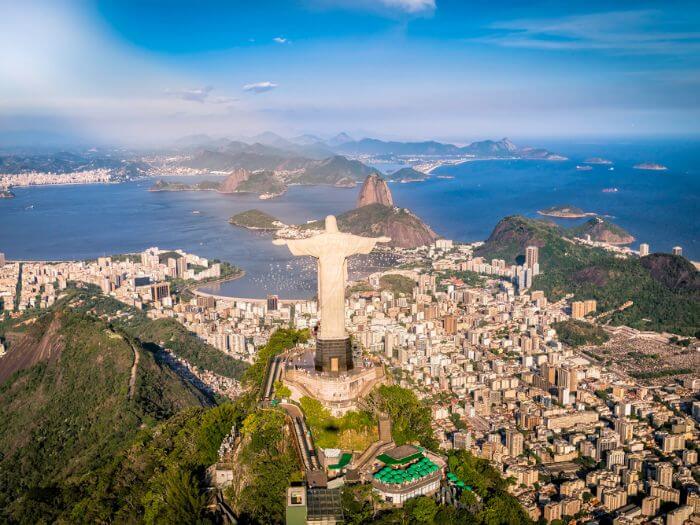
| Official name | Federative Republic of Brazil |
| Capital | Brasilia |
| Most populous city | Sao Paulo |
| Official language | Portuguese |
| Number of regions | 5 |
| Number of States | 26 plus a Federal District |
| Number of cities | 5,570 |
| Area | 8,510,345,538 km² |
| Population | 215,261,219 |
| Geographical borders | Argentina, Bolívia, Colombia, French Guyana, Guyana, Paraguay, Peru, Suriname, Uruguay and Venezuela and the Atlantic Ocean |
| Official currency | Real |
Brazil is in South America and it's the largest and the most populated country which speaks Portuguese.
It's the fifth biggest territorial area in the world, almost as big as the South American continent itself. In the Americas, it's the only country where Portuguese is the official language. Eight out of ten people who speak Portuguese in the world are Brazilian.
Brazil offers lots of attractions that amuse and enchant tourists from every part of the world. Music, food, landmarks, 7,500 kilometres of coastline full of beaches and cultural events make Brazil one of the most appealing and exciting tourist destinations.
The most famous tourist capital in Brazil is Rio de Janeiro. It has been the set of Brazilian movies and Brazilian TV shows and is also present in famous songs internationally.
That’s why Rio is so popular around the world. Its wonderful coastline and natural beauty attract millions of visitors for holidays.
Check out this list of special must-see sights for you to visit Brazil:
- Christ, the Redeemer – landmark in Rio de Janeiro
- The Sugar Loaf – landmark in Rio de Janeiro
- Carnival – an event in Rio de Janeiro
- Iguazu Falls
- The Amazon Rainforest
- Pantanal in Mato Grosso and Mato Grosso do Sul
- Pelourinho – a cultural neighbourhood in Salvador
- Fernando de Noronha Island in Pernambuco
Brazil, A Huge Business Player
Brazil is considered a big market and the largest economy in Latin America. It is the most cited science base outside the G8, the group formed by the United States, Canada, France, United Kingdom, Germany, Italy, Japan and Russia.
It's a country that takes part in important world economic blocs, for example, the Southern Common Market (Mercosur) and the Union of South American Nations. Moreover, it's the letter B in BRICS, formed by the world’s biggest emerging economies.
The growth of a nation is supposed to be followed by the growth of its mother tongue. By the year 2050, it's expected that the native languages of BRICS countries will be dominant for business. So, Portuguese is going to be one of them. Now let’s get to know Portugal, where this language was born.
Portugal, The Birthplace Of Portuguese
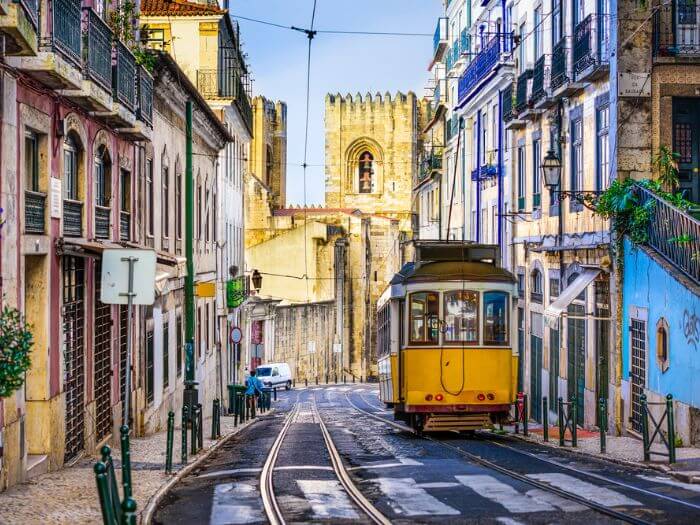
| Official name | Portuguese Republic |
| Capital | Lisbon |
| Most populous city | Lisbon |
| Official language | Portuguese and Mirandese |
| Number of regions | 5 |
| Number of Districts | 18 plus Azores and Madeira Islands |
| Number of Cities | 308 |
| Area | 92.152 Km2 |
| Population | 10,555,000 |
| Geographical borders | Spain and the Atlantic Ocean |
| Official currency | Euro |
Portugal is in the southwest coast of the European continent and it includes the group of islands Madeira and Azores in the Atlantic Ocean.
It's the third most populated country which speaks Portuguese. In Europe, it's the only one where Portuguese is the official language.
You can quickly get to Portugal from any European capital. There you can find lots of attractions such as gastronomy, wines, landmarks and 850 kilometres of beaches.
Let’s get to know some of greatest ones:
- The trendy beaches and resorts in Algarve
- The gardens in Madeira Island
- The vineyards in Alentejo and in Douro Valley
- The gastronomy, nightlife and townscape of Lisbon and Porto, where you can see the traditional azulejo (tiles)
- The colourful architecture and castles in Sintra
- Parks and natural reserves such as Peneda-Gerês
Discover the differences between European Portuguese and Brazilian Portuguese.
Portuguese Speaking Countries In Africa: The Rising Portuguese Speaking Continent
Portuguese was born in Europe, became Brazilian and now it's expected that it will be more African by the end of 21st century. Well, if we consider that six out of nine Portuguese-speaking countries are in Africa, that makes sense.
In total, there are six African countries where the Portuguese language is spoken, but Angola and Mozambique are the two main reasons for this “Africanization” of the language, because of demographic growth.
Let’s get to know a bit about all of them, starting with Angola.
Angola, The Second Most Populated Portuguese Speaking Country
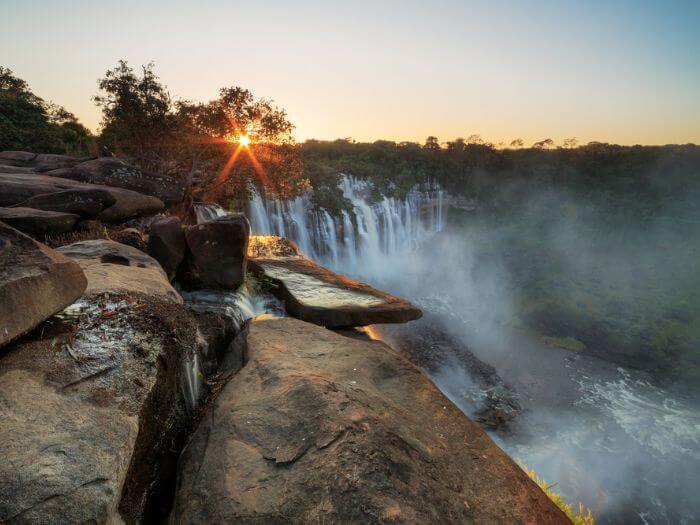
| Official name | Republic of Angola |
| Capital | Luanda |
| Most populous city | Luanda |
| Official language | Portuguese |
| Area | 1.246.700 km2 |
| Population | 29,310,273 |
| Geographical borders | Congo, Democratic Republic of Congo, Zambia, Namibia, the Atlantic Ocean |
| Official currency | Kwanza |
With a great cultural diversity, Angola has almost 30 million inhabitants speaking several languages, among them the official one, Portuguese. Situated in the western coast of the Africa continent, it's a country that's very rich in mineral resources.
Angola is also one of the most diverse biomes in Africa, full of savannas, tropical forests and sea ecosystems. For example, the country is home to Mayombe forest, the second largest in the world, only behind the Brazilian Amazon forest.
Let’s get to know some of the main attractions in the country, chosen by its population as the Seven Natural Wonders of Angola:
- The Deep Crack of Tundavala, in Huila
- Mayombe Forest, in Cabinda
- The Caves of Nzenzo, in Uige
- Carumbo Lake, in North Lunda
- Moco Hill, in Huambo
- Kalandula Falls, in Malanje
- The Chiumbe River, in South Lunda
Learn more about Angolan Portuguese.
Mozambique, The “Indian Pearl”
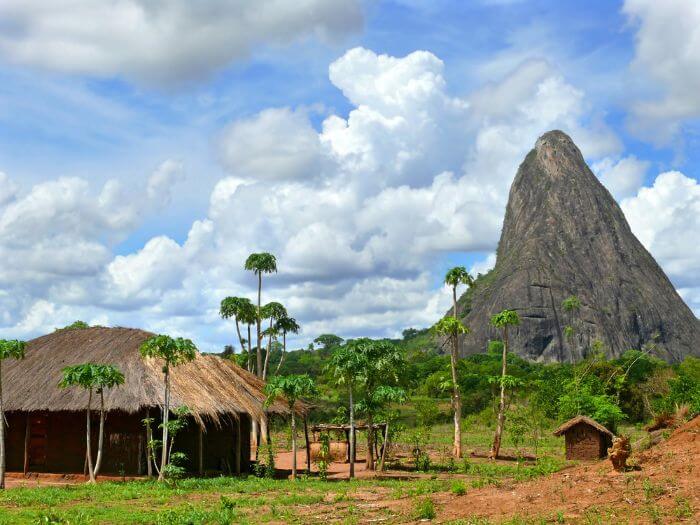
| Official name | Republic of Mozambique |
| Capital | City of Maputo |
| Most populous city | Nampula |
| Official language | Portuguese |
| Area | 801,590 km2 |
| Population | 27,909,798 |
| Geographical borders | Tanzania, Malawi, Zambia, Zimbabwe, South Africa and Swaziland, Indian Ocean |
| Official currency | Metical |
Known as the “Indian Pearl”, Mozambique is a country in the east coast of Africa, where it skirts the Indian Ocean, separating the country from the famous Madagascar Island.
There, the architecture, music, literature and handicrafts stand out, along with stunning seascapes at the coast and inland landscapes, full of rivers, lakes, beaches, undersea species, fauna and flora.
That’s why there are special ecotourist routes to discover in Mozambique:
- Libombos: this route is a mix of experiences with beaches, jungles, heritage sites, water sports, cultural diversity and landscapes.
- Costa das Lagoas: it's special because of ecotourism and the great lakes in the south coast, ecosystems, fauna and flora, dunes and forests.
- Grande Limpopo: it is an exciting route for ecotourists, where you can go on a safari in the great Kruger National Park, a popular holiday destination for international visitors. If you're lucky you might see the so-called “Big Five”: lions, leopards, rhinos, buffalos and elephants.
- Limpopo: there you can visit the Transborder National Park, an area of conservation that unites three parks – the National Park of Limpopo, in Mozambique, the Kruger National Park and the Gonarezhou National Park. You can see giraffes, zebras, hippos, wild pigs and dogs, hyenas and amazing birds.
Guinea-Bissau, An Ecotourist Country
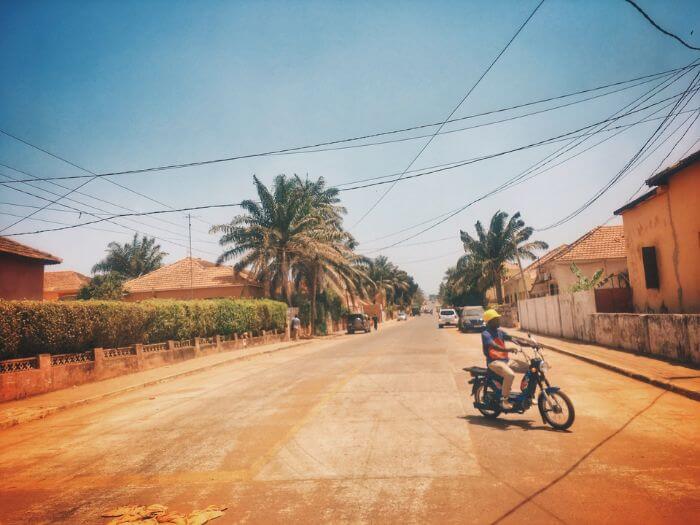
| Official name | Republic of Guinea-Bissau |
| Capital | Bissau |
| Most populous city | Bissau |
| Official language | Portuguese |
| Area | 36,125 km2 |
| Population | 1,792,338 |
| Geographical borders | Senegal, Guinea and the Atlantic Ocean |
| Official currency | West African CFA franc |
Guinea-Bissau is a country in West Africa with several ecosystems: mangroves, forests, savannahs, sand dunes and aquatic zones, which make this country a great destination for ecotourism.
There you can find national parks and the archipelago of Bissagos, a group of about 88 islands and islets located in the Atlantic Ocean, declared a UNESCO biosphere reserve. Here are some of the best places to visit there:
- Orango Island
- Bubaque Island
- João Vieira Island
- Bolama Island
- Rubane Island
- Florestas de Castanhez National Park
- Dulombi-Boe National Park
- Lagoas Cufada Natural Park
Equatorial Guinea, An Island And Inland Country
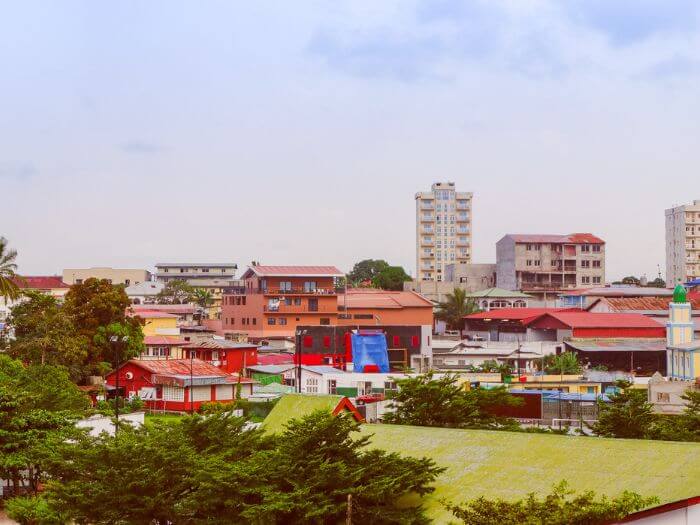
| Official name | Republic of Equatorial Guinea |
| Capital | Malabo |
| Most populous city | Bata |
| Official language | Spanish, French, Portuguese |
| Area | 28,050 km2 |
| Population | 1,679,172 |
| Geographical borders | Cameroon, Gabon. Maritime borders: Nigeria, Sao Tome and Principe |
| Official currency | Central African CFA franc (XAF) |
The main official language in Equatorial Guinea is Spanish, but the country adopted Portuguese as well to become a member of the Community of Portuguese Language Countries and offer professional advantages of being a member to its citizens.
Located on the west coast of Central Africa, the country has an insular and a mainland region. In the Gulf of Guinea there are the islands of Bioko and Annobon, a small volcanic island.
Bioko Island, where the country’s capital Malabo is, and the largest port city of Bata are the most interesting places in Equatorial Guinea.
Let’s check out places to visit there:
- Iladyi Cascades
- Paseo Maritimo
- Monte Alen National Park
- Moca
- San Antonio de Ureca
- Luba
- Djibloho
- Mbini
- Altos de Nsork National Park
- Monte Temelon Natural Reserve
- Corisco
- Cogo
- Utonde
Cabo Verde, A Volcanic Country
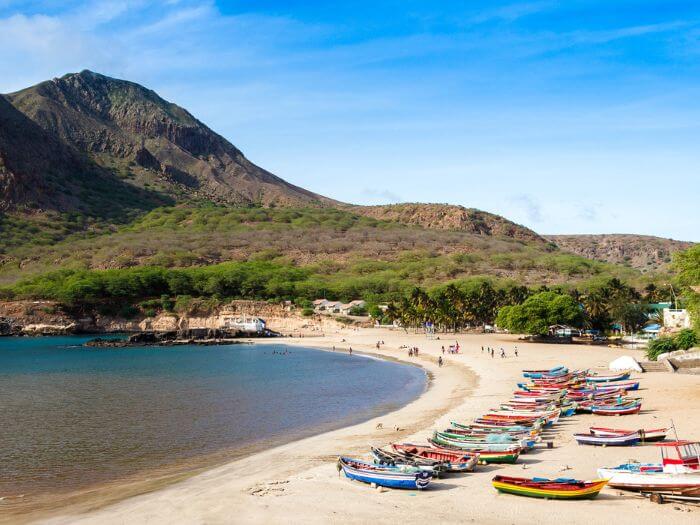
| Official name | Republic of Cabo Verde |
| Capital | Praia |
| Most populous city | Praia |
| Official language | Portuguese |
| Area | 4,033 km2 |
| Population | 570,633 |
| Official currency | Cape Verdean Escudo |
Let’s call it Cabo Verde, in Portuguese, the official language of the government and the media, although most people there speak Cape Verdean Creole on a daily basis.
Well, at least the ones who still live there, because twice as many Cape Verdeans live abroad than in the country itself, mainly in the United States, Portugal and France.
The archipelago is made of ten volcanic islands in the central Atlantic Ocean. Among them, the largest and most populated is Santiago, home to the nation’s capital Praia that hosts the embassies of 13 countries such as the USA, Brazil and some European nations.
As it is an island country, there are several ports and airports. The country has four international airports connecting the island to Africa, America and the main European cities. By the way, it's only 4 hours away from Europe and America by plane.
The coastline has 55 kilometres of beaches, so you can find one for your dream vacation. Almost all islands offer great experiences, such as Sal Island, the most popular, where you can visit Santa Maria Bay.
- Boa Vista Island
- Maio Island
- Sal Island
- Santa Maria Bay
- Praia city
- Fogo Island
- Mindelo
- Ribeira Grande
- Porto Novo
- Ribeira Brava
- Morro
- Vila Nova Sintra
- Sao Filipe
Sao Tome E Principe, The “Equator” Country
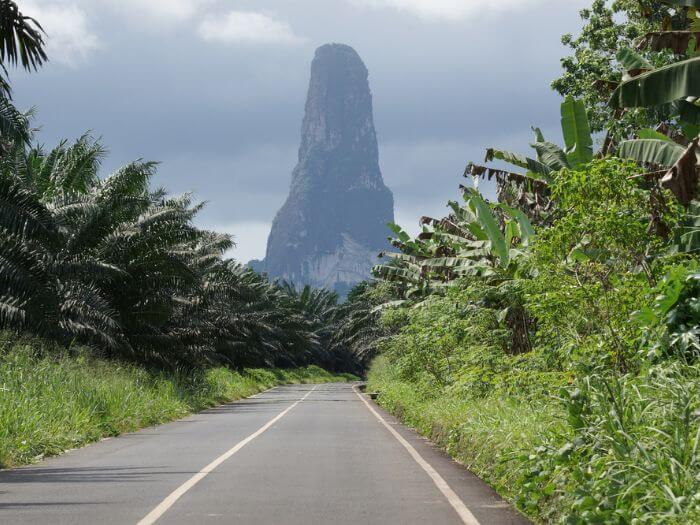
| Official name | Democratic Republic of São Tome e Principe |
| Capital | São Tomé |
| Most populous city | São Tomé |
| Official language | Portuguese |
| Area | 1,001 km2 |
| Population | 178,739 |
| Official currency | Dobra |
Africa's second-smallest country, Sao Tome e Principe is a country made up of two main islands and some islets in the Gulf of Guinea, off the western coast of Central Africa, located right on the Equator.
There is even a landmark pointing out exactly where it crosses the island, in Ilhéu das Rolas.
The coast has several deserted beaches, one of them is Jalé, where you can go camping and appreciate giant sea turtles. Tourism has been expanding with the increase of foreign investment. Large resorts have been built on the beaches of São Tomé and Príncipe.
Let’s get to know some good places to visit there:
- Boca do Inferno
- Sao Nicolau waterfalls
- Sao Sebastiao Museum
- Peak of Sao Tome
Portuguese Speaking Countries In Asia
Let's finish this world tour of Portuguese speaking countries with a visit to two places in Asia where you'll hear Portuguese.
Timor Leste, A Newborn Asian Country
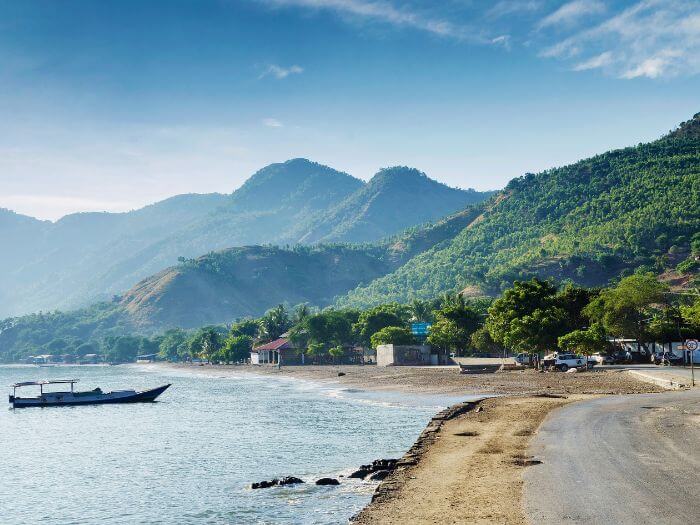
| Official name | Democratic Republic of Timor Leste |
| Capital | Dili |
| Most populous city | Dili |
| Official language | Portuguese and Tetum |
| Area | 14,874 km2 |
| Population | 1,340,513 |
| Geographical borders | Timor Sea and Indonesia |
| Official currency | USA dollar |
Timor Leste is an island country in Southeast Asia, close to Australia, its southern neighbour across the Timor Sea. Most urban populations of this sole independent Portuguese-speaking Asian country live along the coastline.
Timor Leste was born as a country in 2002, so it's one of the most recent nations on Earth.
Let’s discover some emblematic places in this newborn country:
- Marobo Hot Springs
- Salt Lakes of Tasitolu
- Hato Builico Village
- Atauro Islands
- Nino Konis Santana National Park
- Jaco Island
Macau, The “Las Vegas Of The East”
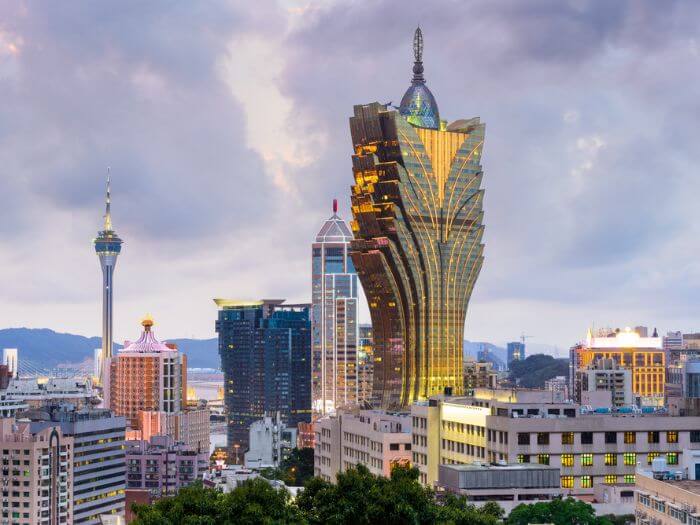
| Official name | Macao Special Administrative Region of the People’s Republic of China |
| Capital | Not specified |
| Most populous city | Nossa Senhora de Fatima |
| Official language | Chinese and Portuguese |
| Area | 115,3 km2 |
| Population | 682,300 |
| Geographical borders | South China Sea and city of Zuhai |
| Official currency | Macanese Pataca |
Although Macau is an administrative region of China, it retains a separate government and economic system.
Portuguese is the official language, but Cantonese, a variety of Chinese, is largely spoken. The region is on China's southern coast and consists of Macau Peninsula, Taipa and Coloane.
Considered the most densely populated region in the world, the territory is highly urbanized, mostly built on land reclaimed from the sea. The majority of the population lives in Macau Peninsula.
Known as “Las Vegas of the East”, it has become a destination for gambling tourism, even greater than the famous Vegas, making Macau one of the richest economies in the world on a per capita basis.
The exclusive influence of Portugal and China makes Macau unique in architecture, recognized by UNESCO as a World Heritage site.
Another legacy from these two countries is tradition and culture: a collection of holidays, festivals and events, such as the Macau Grand Prix, similar to Monaco's, and the most important, The Lunar Chinese New Year.
FAQs About Portuguese Speaking Countries
What African countries speak Portuguese?
Cabo Verde
Equatorial Guinea
Guinea-Bissau
Mozambique
Sao Tome e Principe
Angola
Which countries speak Portuguese?
Portuguese is the official language of 10 countries in 4 continents:
Angola
Brazil
Cabo Verde
Equatorial Guinea
Guinea-Bissau
Macao
Mozambique
Portugal
Sao Tome e Principe
Timor-Leste
What are the 8 Portuguese-speaking countries?
The eight Portuguese-speaking countries, also known as the Lusophone countries, are:
Portugal
Brazil
Angola
Mozambique
Cape Verde
Guinea-Bissau
São Tomé and Príncipe
East Timor (Timor-Leste)
These countries are part of the Community of Portuguese Language Countries (CPLP).
What countries speak Portuguese officially?
The countries that officially speak Portuguese are:
Portugal
Brazil
Angola
Mozambique
Cape Verde
Guinea-Bissau
São Tomé and Príncipe
East Timor (Timor-Leste)
Equatorial Guinea (Portuguese is one of its official languages)
These countries are members of the Community of Portuguese Language Countries (CPLP).
Portuguese Speaking Countries Make It An Up-And-Coming Language
As you have just read, nowadays Portuguese is one of the most spoken languages in the world, figuring in the top 10 ranking of languages, amounting to around 250 million speakers.
It’s also the second most spoken language in Latin America and the third among the European languages. According to UNESCO, after English, Portuguese is the European language that's growing fastest as an international language.
Unfortunately, around three thousand languages will disappear during this century, but Portuguese is definitely not in this list.
The language has not only been surviving as time goes by, but it is also rising. It is supposed that the number of Portuguese speakers will double by the end of the 21st century, reaching the mark of 500 million.
So, it’s high time to be part of this community of Portuguese speakers – yet another reason to learn Portuguese! And what better way to do it than through StoryLearning.

Olly Richards
Creator of the StoryLearning® Method
Olly Richards is a renowned polyglot and language learning expert with over 15 years of experience teaching millions through his innovative StoryLearning® method. He is the creator of StoryLearning, one of the world's largest language learning blogs with 500,000+ monthly readers.
Olly has authored 30+ language learning books and courses, including the bestselling "Short Stories" series published by Teach Yourself.
When not developing new teaching methods, Richards practices what he preaches—he speaks 8 languages fluently and continues learning new ones through his own methodology.
